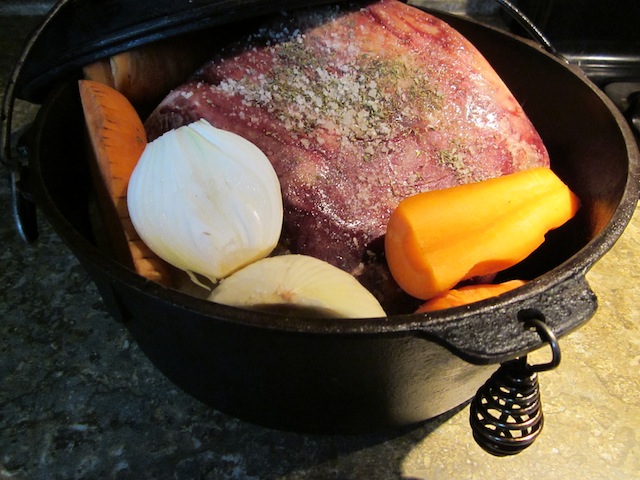
Being frugal our family has our own rib festival at home. We also save the pork fat for later cooking and the bones for bone broth.
Kamloops RibFest has just ended. We decided to have our own RibFest at home. Being frugal we can feed the whole family for the price of one serving of festive ribs. Here’s what we do for delicious, homemade ribs!
Rib Marinate
2-3T organic cider vinegar
1tsp sea salt
1 organic bird’s eye pepper
Cut up a whole rack of ribs into small pieces. Use a mallet and clever to cut through the bones. Place the ribs into a glass baking tray. Marinate the ribs in cider vinegar and spices for at least 30-60 minutes at room temperature. Longer is better.
Rib Sweet and Spicy Sauce
1/4c to 1/3c organic cider vinegar
1/4c organic ginger, finely grated
1/4c organic garlic, finely grated
1tsp sea salt
1 organic bird’s eye pepper
1T local honey
In a sauce pan mix up the cider vinegar, ginger, garlic, sea salt, pepper and honey. Bring the mixture to a boil and set aside for later. This sauce will be added to the ribs in the last 20-30 minutes of cooking.
Cook the marinated ribs at 300F for 90-120 minutes. Have one layer of ribs so the ribs will brown nicely. Use two glass trays, if necessary. When the ribs are done, pour off the fat and save it for later cooking. Any drippings from the ribs are added to the spicy sauce. Save the rib bones for making Bone Broth.
After the ribs are nicely browned, stir in the spicy sauce and cook for another 20-30 minutes. Carefully check and stir the ribs every 10 minutes to avoid the sauce from burning. If you want sweeter ribs, add two tablespoons of Apple Chutney just before serving.
Serve the ribs on a bed of Cauliflower Side Dish and have a garden salad with Mustard Dressing on the side.
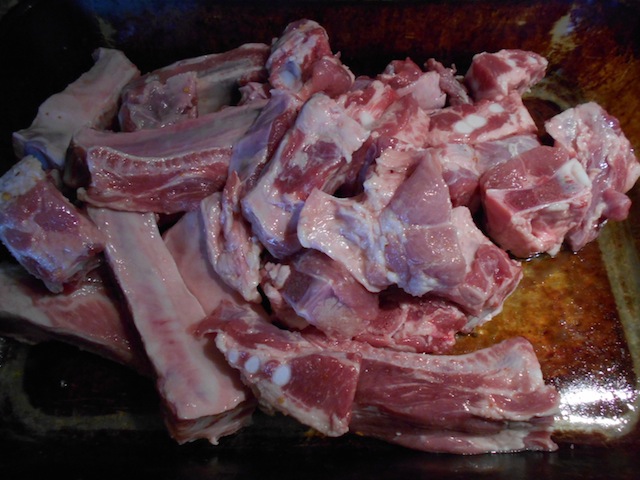
Marinate the ribs for at least 30-60 minutes at room temperature.
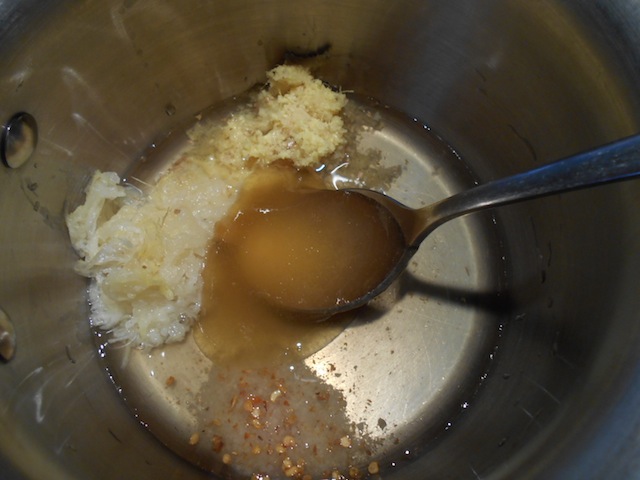
Heat the Sweet and Spicy Sauce to the boiling point and set aside for later use.
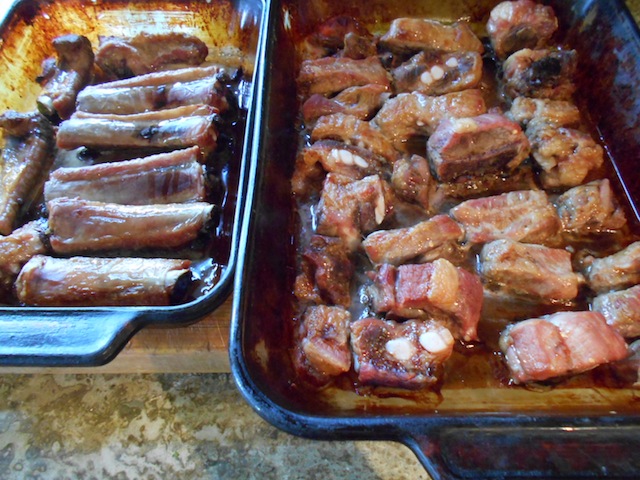
Place the ribs in one layer on the glass tray. This ensures the ribs brown well. Use two trays, if necessary.
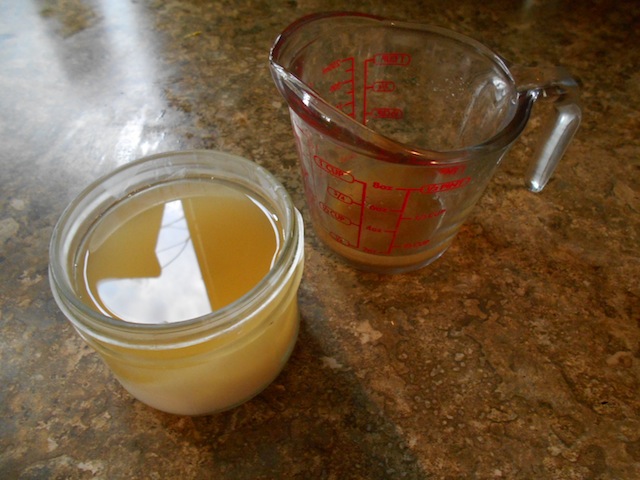
When the ribs are done, pour off the fat for later cooking. Put any rib drippings into the sauce.
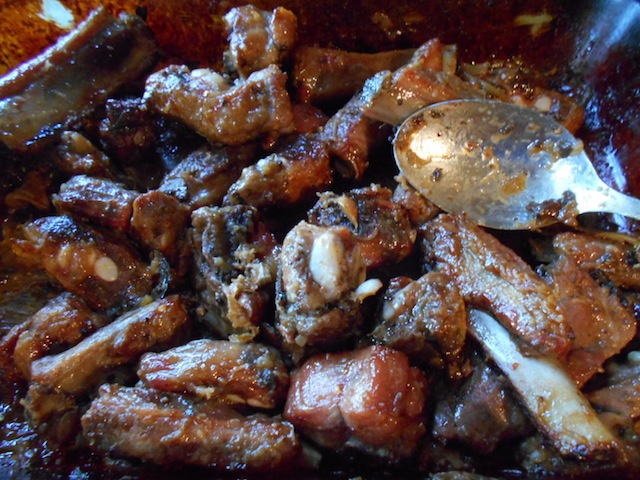
After adding the sauce to the ribs, check and stir every 10 minutes to avoid burning.
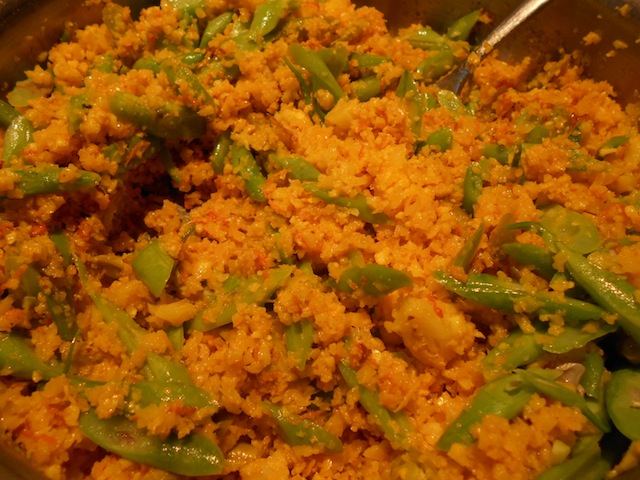
Serve the ribs on a bed of Cauliflower Side Dish with seasonal, garden vegetables.
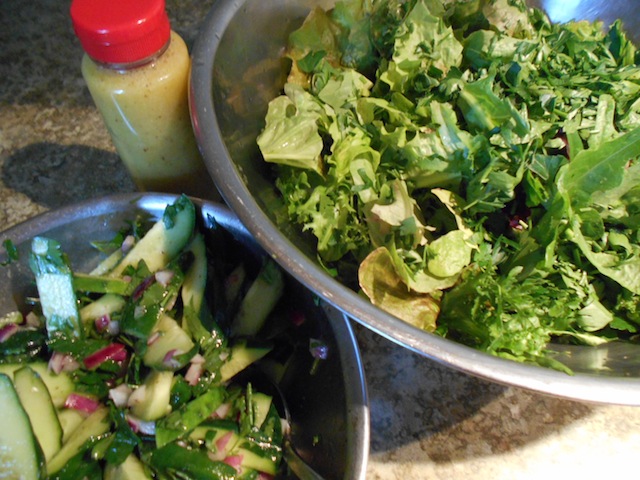
These ribs are nice with a side of garden salad topped with Mustard Dressing.

